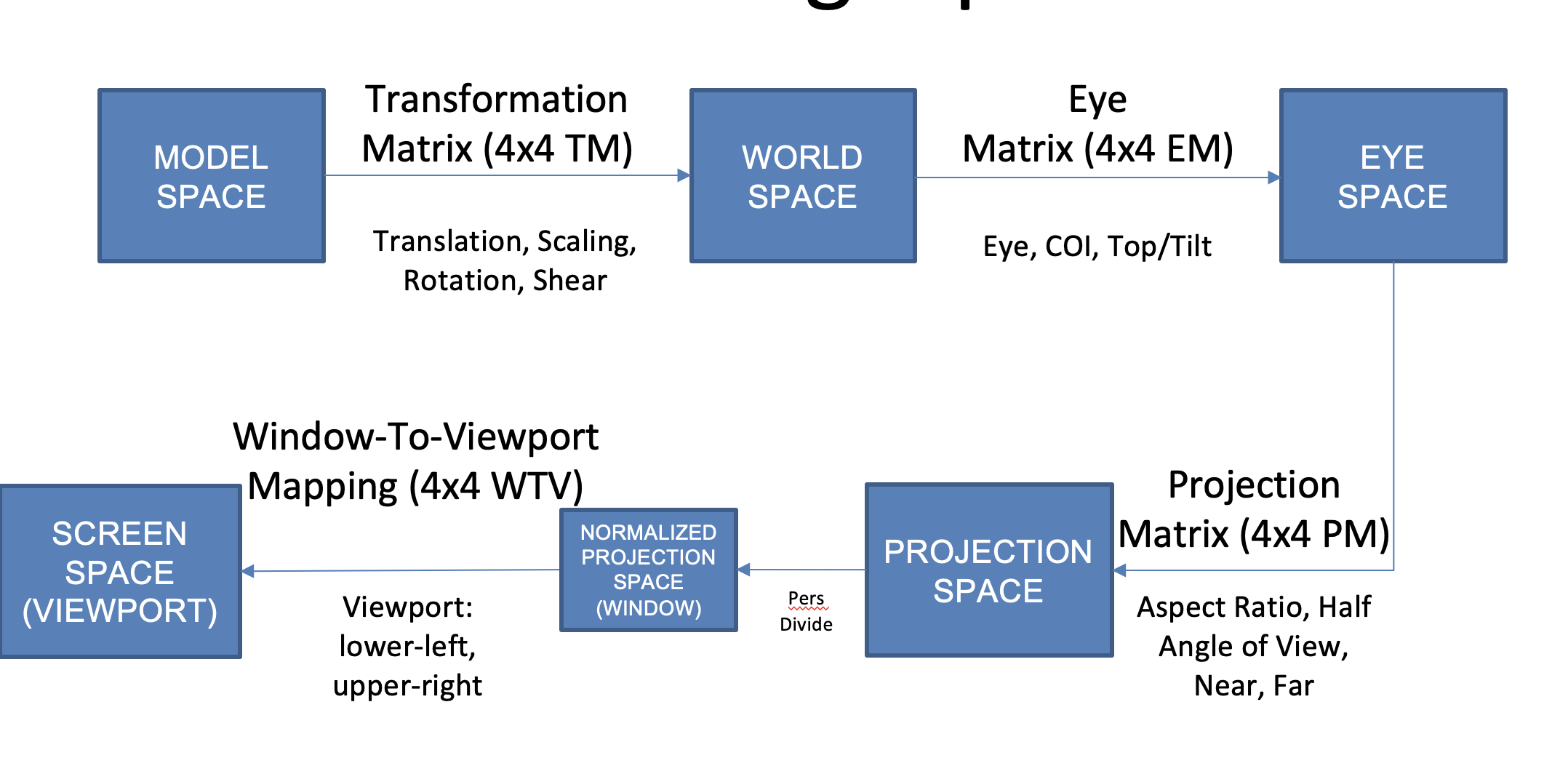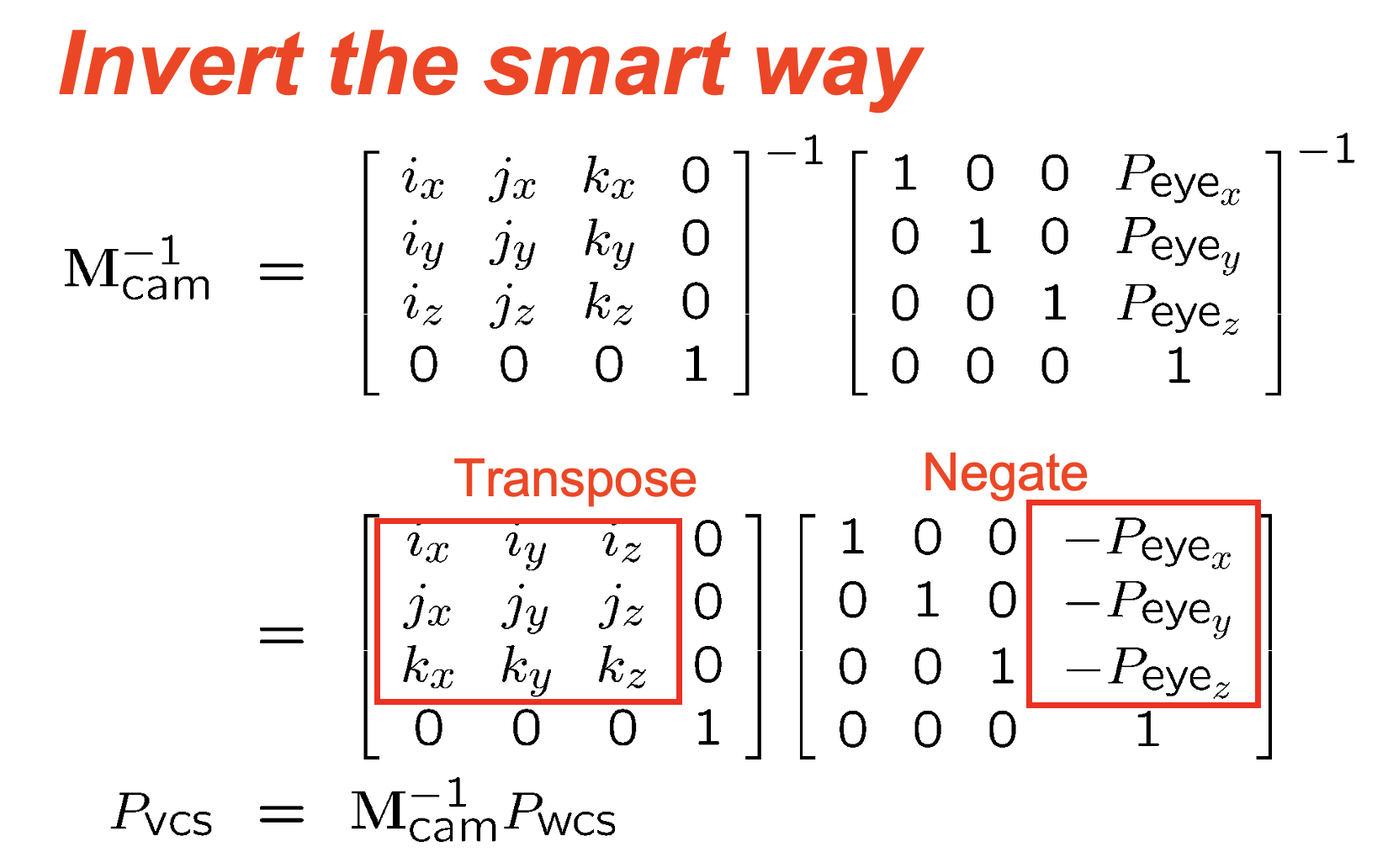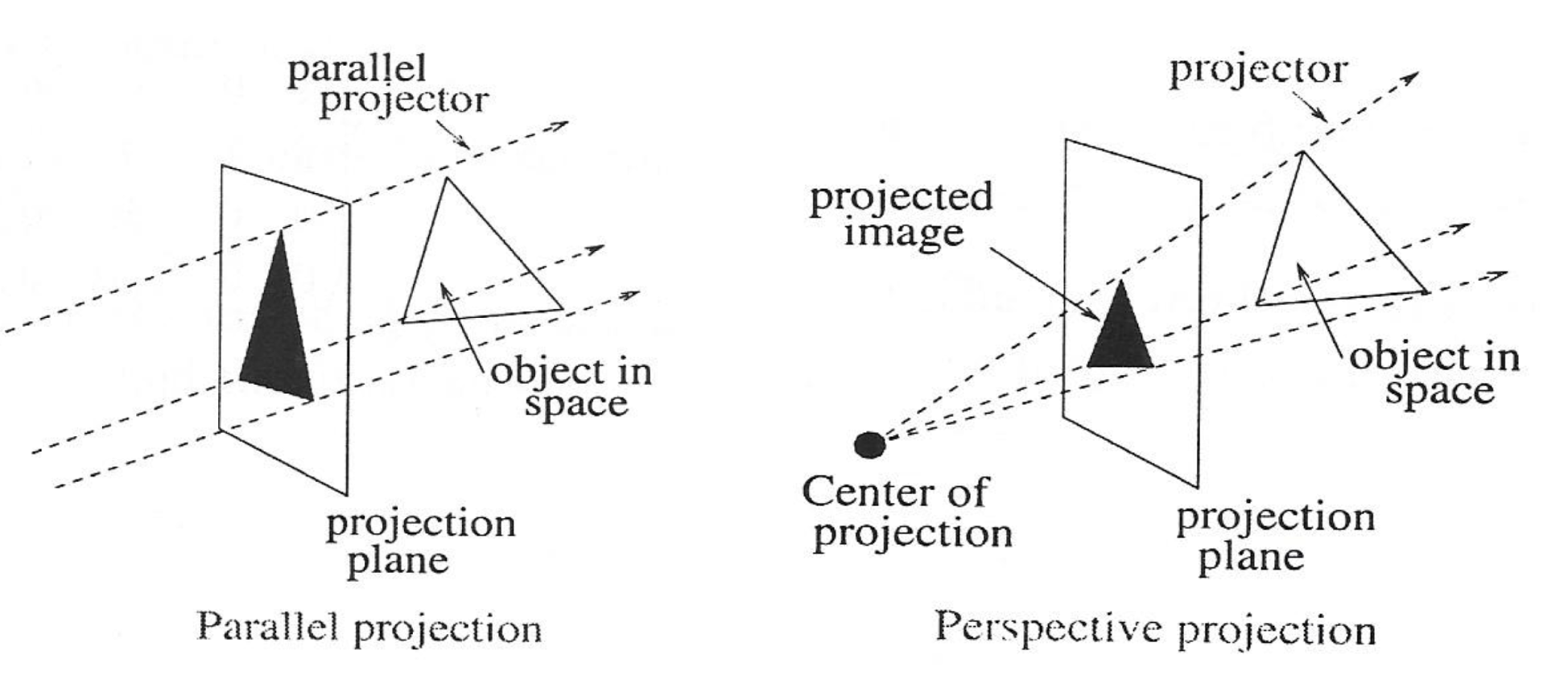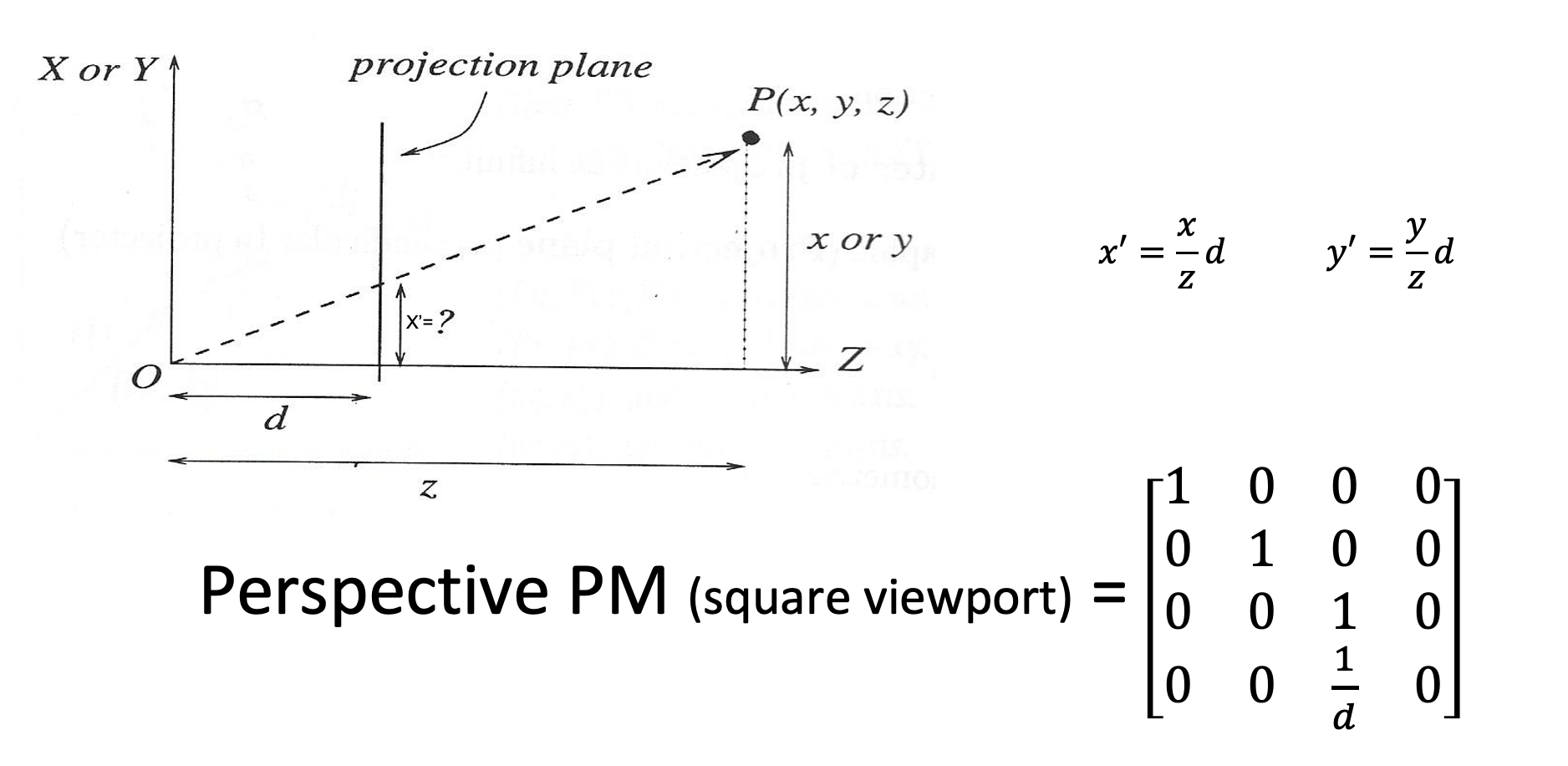4 - Camera, Projections, and Viewport
ucla | CS 174A | 2024-01-30 19:09
Table of Contents
Eye Space
- params
- eye location
- center of interest
- tilt angle or top point
- we define the camera in the World space
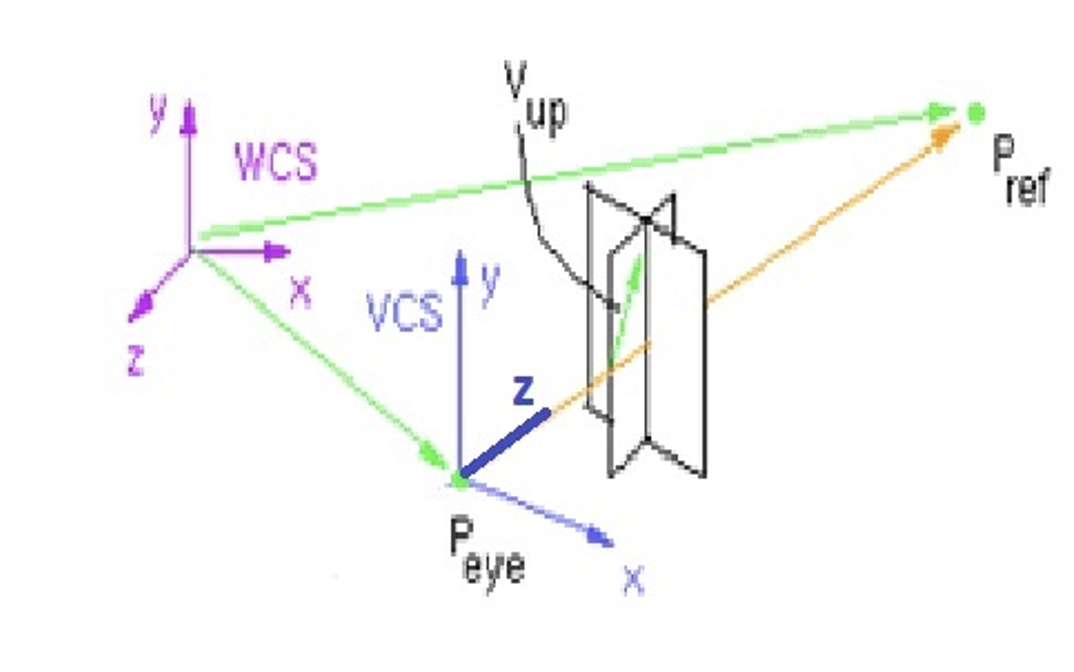
- we create bases based on the following calculations
Basis
normalize to get unit vectors for basis - align as column vectors
- however, now
- the eye basis now points
Viewport Idea
- we can take a point and project it to the viewport by applying a single amtrix that is the cross product of multiple matrices: transformation, eye, projection, etc.
- then send that to the viewport; each matrix is 4x4 and the point is 4x1
Projections
- orthographic projections
- the canonical view volume is the unit parallel projection with
- given a volume the view volume dimension are -W to W width, -H to H and distance D=far point - near point

- the parallel projection matrix is the identity
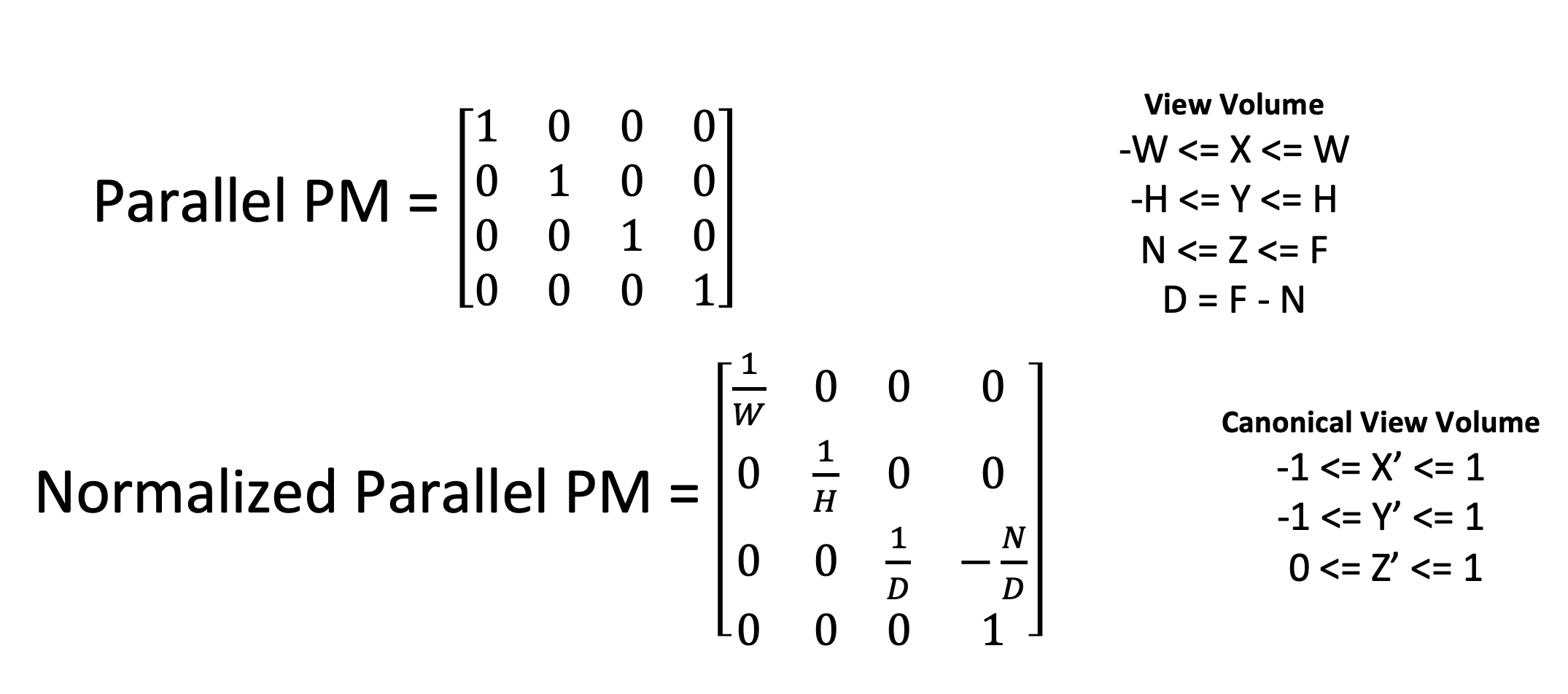
Perspective Projection
- NOTE: slides are different
- square projection viewport
- the half angle is angle wrt to x-axis from the z/k axis to the edge of the view volume to one side, the area swept by
Normalization
- the projection plane:
- the object (a point:
- here
- similarly for the y-axis, where H is like W
- however for z-axis everything collapses to the projection plane so it is a constant
- the division of
- final matrix is all of these plus the 1 at the last 4th dim
- but we lose depth which we need for hidden surface removal, so we can define a new matrix with some linear function for
- so we create a perspective projection matrix that maps the perspective objects into a parallel NDC (openGL) cube which we can render to the viewport; here N is near value, F is far value, D is depth:
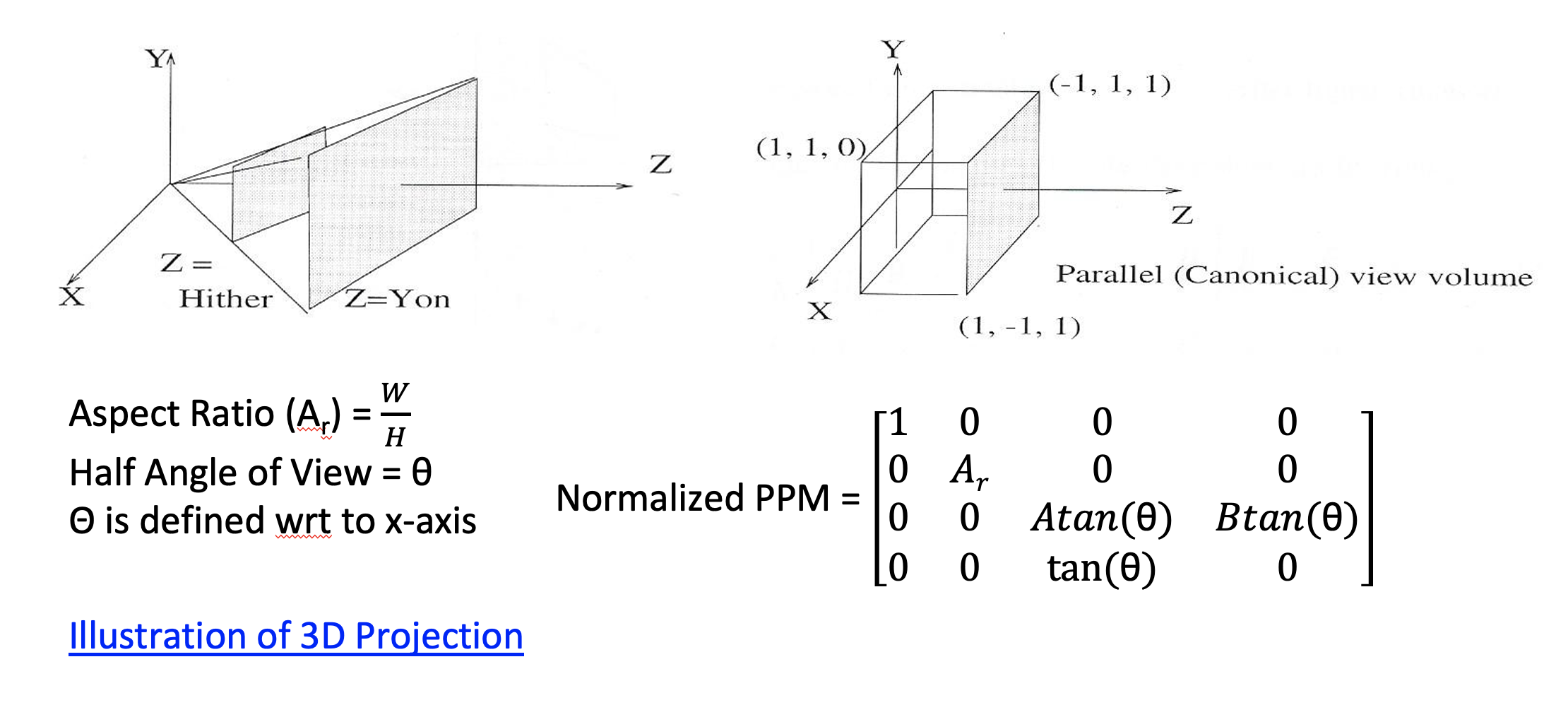
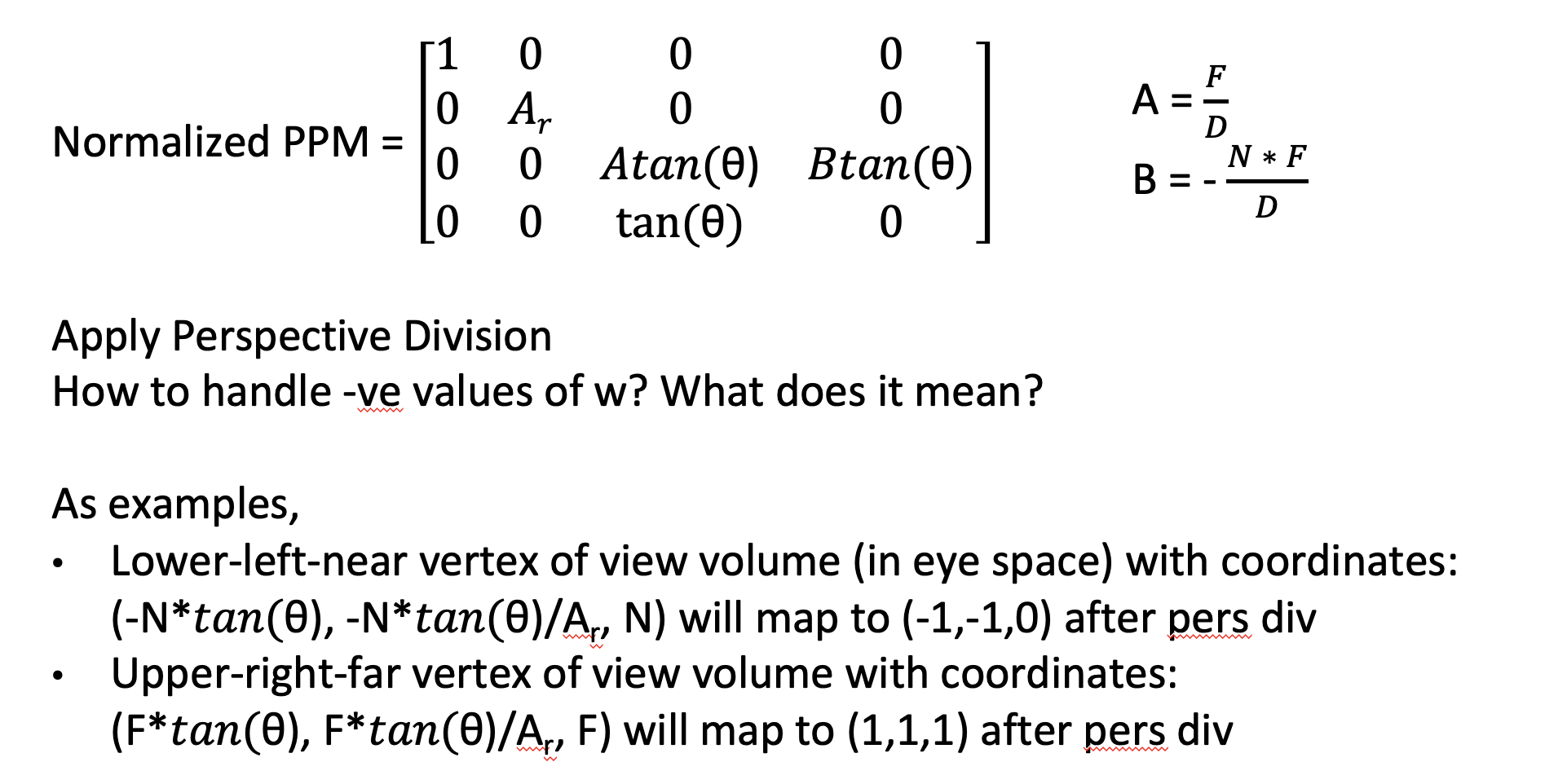
Window to Viewport Mapping
- where T is transformation and S is scaling
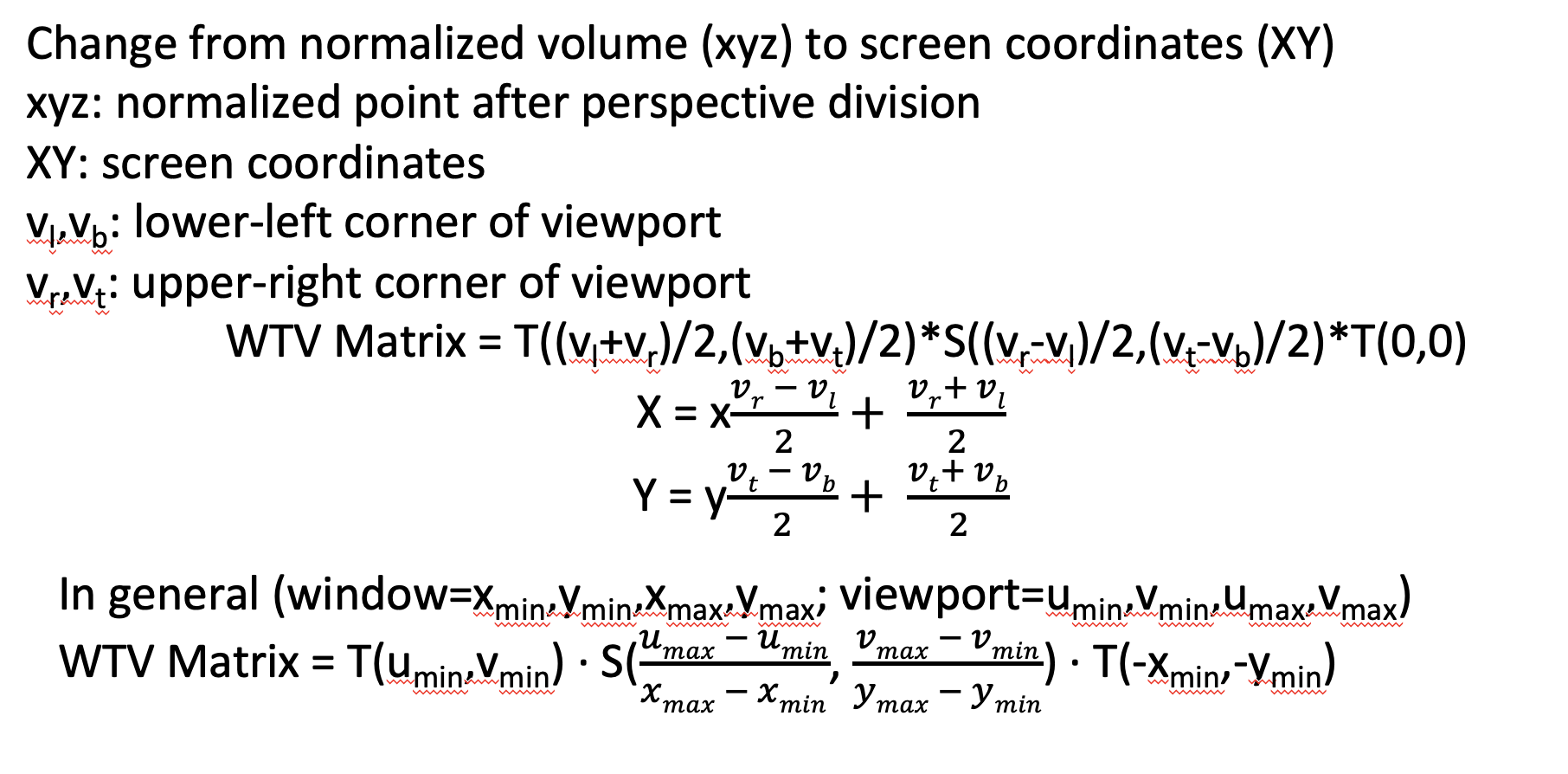
Final Rendering Pipeline
